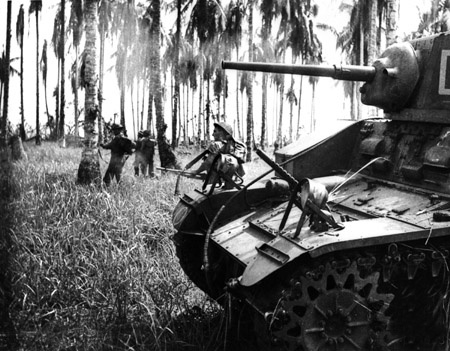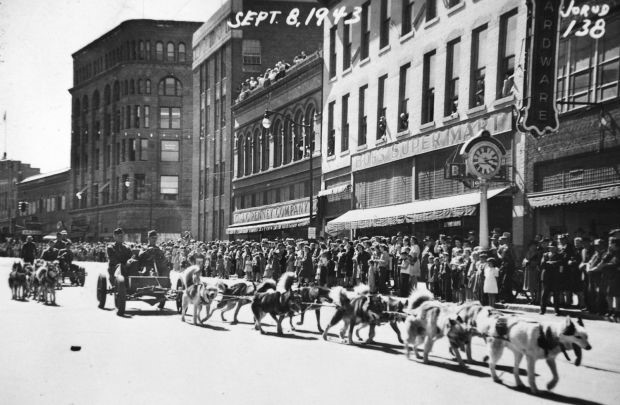Montana, a proud partner with the U.S.A. Commemoration Committee of the Korean War, is recognizing the 70thAnniversary of the invasion of the Republic of South Korea by the North Korean Peoples Army (NKPA) forces on June 25, 1950. North Korean forces took Seoul, the South Korean Capital, on June 29, 1950. U.S. forces entered the conflict on June 30, 1950, termed a “police action” by President Harry S. Truman.
President Truman was at home that Saturday evening, June 24, 1950, spending the weekend away from Washington, D.C., attending to family business in his hometown, Independence, Missouri. He was sitting in the library of his old frame home when the telephone rang. It was Secretary of State Dean Acheson. Acheson said, “Mr. President, I have some very nervous news. The North Koreans have invaded South Korea.” From June 25, 1950 to July 27, 1953 thousands of Montanans were in a war again.
U.S. Intervention consisted of Detachment X (35 men of the 507th Anti-Aircraft Weapons Battalion ((Bn)) that shot down a North Korean YAK aircraft. The unit sustained eight Wounded in Action (WIA), the first U.S. casualties of the Korean War.
North Korea invaded South Korea across the international treaty boundary established in 1945 with 135,000 troops, spearheaded by a Soviet style tank brigade, initiating war. The UN Security Council immediately demanded cessation of hostilities and withdrawal of the North Korean forces to the 38th Parallel.
On June 27 the UN Security Council asked its members to help carry out the demand and President Truman ordered general of the Army, Douglas MacArthur to aid South Korea. He ordered the 7th U.S. Fleet to protect Formosa (Republic of Taiwan) against possible aggression and to keep the Chinese National forces from attacking the mainland. Requested by the UN to name a commander of UN forces, President Truman so designated General MacArthur on July 8, 1950.
The U. S. was unprepared for even a limited war that was thrust upon our nation. The U.S. was destined to furnish the bulk of men, women and war material at a time when our military services were short of personnel and supplies. Among American military units the biggest problems were those of insufficient personnel numbers, inadequate training, and equipment shortages. Even to fight an undeveloped nation in Asia, America had to fall back upon her citizens. And in this, above all else, lies the resulting trauma of the Korean War.
By July of 1950, President Truman was forced to authorize the calling up of our Nation’s military reserve forces. The folly of our sudden reduction of our armed forces after World War II was realized. The result was that the Army, Marine Corps, Navy, U.S.
Coast Guard and the newly created Air Force along with the Coast Guard saw that all their available forces would be involved in this conflict. There would be nothing left for fresh emergencies. The result was that thousands upon thousands of military reservists were mobilized to put on uniforms to fill the ranks of our military organizations.
President Truman called into service four Army National Guard divisions, hundreds of lesser units, and thousand of individual volunteer reservists at the Pentagon’s request. The result that over 4,000 Montana reservists were called into federal service and were soon in combat a thousand miles from home. To deaden the adverse impact at the time, this Cold War conflict was termed a “police action.”
The Korean War was the first military conflict in which Montana had no large identified military unit in action. But Montana individuals fought on the battlefields, on the sea, and in the air in that difficult war. In previous wars Montana had territorial militia in the Indian wars in Montana, a Montana infantry National Guard regiment volunteered for duty in the Spanish-American war and Philippine Insurrection, and a Montana National Guard regiment in World Wars I and II.
Shortly after the end of World War II, the Montana National Guard was reactivated in various cities and town. The Army National Guard’s 163rd Regimental Combat Team was stood up in 1946 and within a year became the 163rd Armored Cavalry Regiment. Also activated was the 186th Fighter Squadron, Montana Air National Guard. This was a result of establishment of the U.S. Air Force in 1947, there-designation of the U.S. War Department as the Department of Defense and realization of the Cold War era. In addition, numerous Army Reserve, Navy Reserve, Marine Corps, and Air force Reserve units were being located in various cities and towns in Montana. These units, together with hundreds of individual Montana volunteer reservists, were a part of the great reservoir of strength for the anemic active military establishment that existed at that time.
At that time Montana had three U.S. Marine Corps Reserve rifle companies located at Billings, Butte and Shelby. Their combined strength was a little over 400 men. The company at Shelby had 164 men on its rolls. There were also hundreds of individual Marine Corps reservists called to active duty. These men became members of the 1st Marine Corps Division which won a name for itself in campaigns in Korea. A total of 27 Montanans in U.S. Marine Corps were killed in action or died of wounds. Scores were also wounded.
From Shelby, Montana to El Paso, Texas; from Boston, Massachusetts to San Francisco, California, the Marine Corps fulfilled its obligations by organizing, training, and sending to the Korean War a hard-hitting mixture of regulars and reserves into hostilities. This included 74,000 regulars and over 89,000 reservists, many from Montana.
Noteworthy among the steps taken to meet U.S. military personnel needs in Korea was the calling to active duty a large percentage of Montana Reserve Officer Training Corps graduates. For example, of Army lieutenants called to duty in 1951 to 1953, 70 percent were ROTC graduates. A large number came from Montana State University and Montana State College. Today those schools are known as University of Montana at Missoula and Montana State University, Bozeman.
The Montana Air National Guard’s 186th Fighter Squadron, formed in 1947, with its supporting units consisting of 384 officers and men were called into federal service on April 1, 1951. The fighter squadron, flying F-51 D fighter-bombers was assigned to the Strategic Air Command at Moody Air force Base, Georgia, where it was a part of the 146th Fighter Wing. The Squadron served the nation for the next 21 months.
In November 1951, the Montana ANG squadron was transferred to George AFB, California and assigned to the Tactical Air Command. From there a series of men and aircraft were assigned temporary duty in Iceland for four months. After serving on active duty for 21 months, the squadron was released from duty January 1, 1953. During the 18ths tour of duty many of its pilots and airmen volunteered for duty in Korea. Montana fighter pilots tangled with North Korean and Chinese pilots over Korea numerous times.
In addition to Montana U.S. Marine Corps Reserves and Air National Guardsmen in service in Korea were many individual reservists from the U.S. Army, Navy and Air Force. A number of Army reservists were surprised at their call to active duty as they had forgotten they had signed up for the un-assigned reserves. The same was true for a number of bewildered Navy and Air Force Reservists. Due to the Selective Service Act which was in force after World War II, many Montanans were inducted into military service during the Korean War period. Regular quotas of Selective Service men for all branches of the service were requested during the War with many selectees seeing combat service in Korea or serving on worldwide duty.
Montana had 19,915 men and women in service during the Korean War period 1950-1953 with an estimated over 5,000 in the Korean combat zone. A total of 193 lost their lives in the Korean War conflict with many hundreds being wounded or traumatized as prisoners of war. Many more have served in Korea from 1953 until today as peacekeepers and deterrent to further aggression by North Korea. To date, there are 27 Montanans listed as Prisoners of War and /or Missing in Action (POW-MIA) on the 70th Anniversary of the Start of Korean War.


